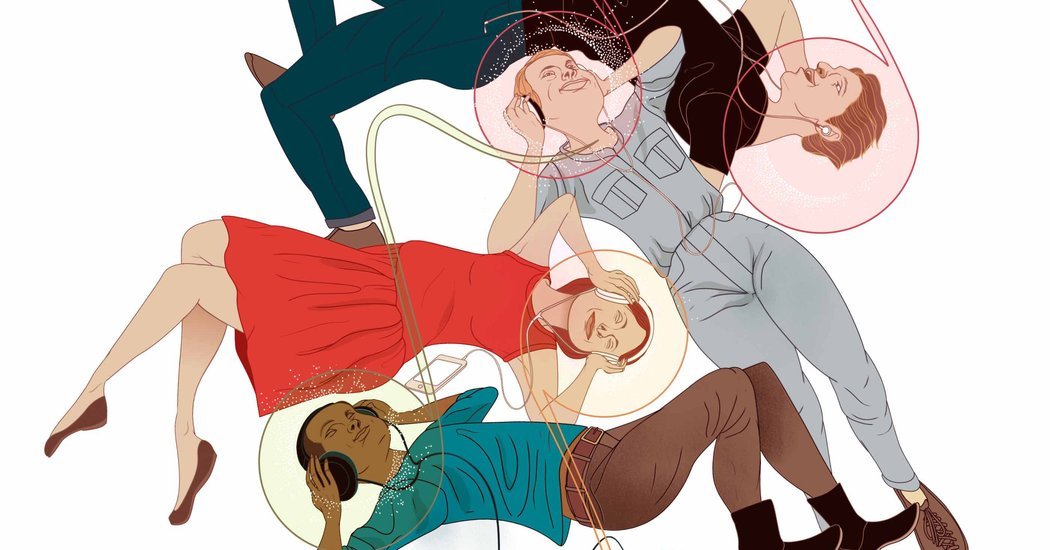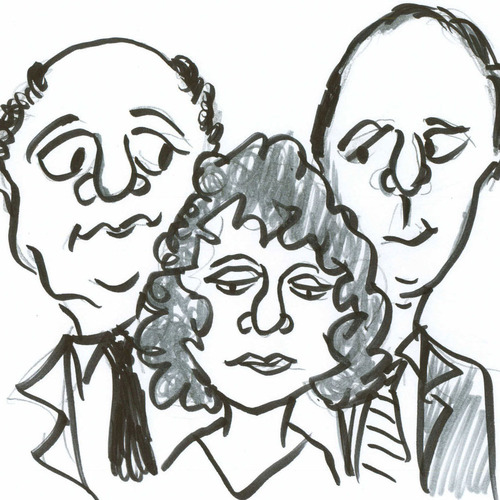While it helps to identify the strategies that help you do what you do consistently well, you probably need to figure out the things that cramp your productivity style, too. Are there particular things that throw you off track? A recent article on Mashable suggested that there five things that you should stay away from so that you can get more done (like not sleeping enough), and I’m sharing six more that you should consider kicking out of your regular routine.
Having poor eating habits […]
Moving at the speed of light […]
Trying every productivity strategy […]
Working only on other people’s stuff […]
Taking on too much […]
Having no way to keep yourself accountable […]
Classical music is an acquired taste. I have not quite recovered from the extraordinary experience of hearing a live performance of a 100-year-old concerto at the Royal Festival Hall last week, but I know that the notion that classical music can be as exhilarating in its own way as a Rolling Stones revival sounds off-beam to most of the population.
Here’s a great TED Talk by Benjamin Zander on “The transformative power of classical music”.
I, too, only really started taking an active interest in classical music in the past few years. I was lucky enough to be invited by a friend to catch some lunchtime concerts at my old Uni, and got hooked.
Notwithstanding my lack of musical training, I tentatively started putting together some “rough guides” to classical composers on one of my other blogs:
My Symphony
To live content with small means;
To seek elegance rather than luxury,
And refinement rather than fashion;
To be worthy, not respectable, and wealthy, not, rich;
To study hard, think quietly,
Talk gently,
Act frankly;
To listen to stars and birds, babes and sages, with open heart;
To bear all cheerfully,
Do all bravely,
Await occasions,
Hurry Never.
In a word, to let the spiritual, unbidden and unconscious, grow up through the common.
This is my symphony.— William Henry Channing
Enjoy a hypnotic time-lapse video of a spider weaving its circular web
By taking one photo every four seconds for about 90 minutes, Jean-Michel created this video tracking a spider as it goes round and round, finishing off its super-strong work of art. It’s a simple video, but still fascinating to watch, especially as it backtracks over certain spots to reinforce them.
1) Your “feared self”:
Via Brandwashed: Tricks Companies Use to Manipulate Our Minds and Persuade Us to Buy:
In a surprising 2008 study, researchers at the University of Bath, UK, found that the fear of failure drives consumers far more than the promise of success ; the latter oddly tends to paralyze us, while the former spurs us on (and pries open our wallets). In fact, as the study found, the most powerful persuader of all was giving consumers a glimpse of some future “feared self.”
[…]
2) Your “ideal self”:
…marketing strategies centered on celebrity do the exact opposite: they appeal to fantasies about our idealized future selves.
[…]
Time Out, the hit 1959 album by the Dave Brubeck Quartet, was one of the first popular jazz works to explore meters beyond the traditional 4/4 and ¾. (The first number, which is the top number of the time signature in sheet music, represents the number of beats in the measure, and the second number represents the note value that receives one beat. 4/4 means that there are four beats and a quarter note lasts for one beat, yielding four quarter notes in each measure.) “Take Five“ and “Blue Rondo a la Turk,” two of Brubeck’s most popular works, are both on Time Out.
Justin London is a professor of music at Carleton College in Minnesota who specializes in music perception and cognition, particularly with respect to musical meter. He says that Brubeck actually inspired much of his research into rhythm and meter. “I knew that it had a visceral, toe-tapping sense of beat and rhythm,” he says, “but according to most theories of rhythm and meter developed in recent decades, it couldn’t, given its uneven beat structure.”
London says that Brubeck’s rhythms can play with the listener’s innate toe-tapping ability—the technical term is entrainment. “Whenever you start doing anything in rhythm the whole motor center of the brain starts lighting up.” He notes that musicians and nonmusicians do equally well on tests of this ability. It appears to be an innate skill, part of the way we interact socially. Asymmetrical meters may be appealing because they test people’s native entrainment ability and keep the brain more active while listening and performing. “The asymmetrical meters do make you work a little harder to make you stay along with them, and that’s part of their appeal, attraction and charm,” London says.
Brubeck wasn’t too caught up in the psychology or numerology of his music. “Of course, rhythms can be looked at in a mathematical kind of way,” Langham says, “but I think as a musician he was more focused on making sure that the music reflected a type of emotional content, that it was able to reach people and move people, even if it wasn’t in a standard time signature like 4/4.”
Vale, Mr Brubeck.
MEDITATION and mindfulness: the words conjure images of yoga retreats and Buddhist monks. But perhaps they should evoke a very different picture: a man in a deerstalker, puffing away at a curved pipe, Mr. Sherlock Holmes himself. The world’s greatest fictional detective is someone who knows the value of concentration, of “throwing his brain out of action,” as Dr. Watson puts it. He is the quintessential unitasker in a multitasking world.
Though the concept originates in ancient Buddhist, Hindu and Chinese traditions, when it comes to experimental psychology, mindfulness is less about spirituality and more about concentration: the ability to quiet your mind, focus your attention on the present, and dismiss any distractions that come your way. The formulation dates from the work of the psychologist Ellen Langer, who demonstrated in the 1970s that mindful thought could lead to improvements on measures of cognitive function and even vital functions in older adults.
The concentration benefits of mindfulness training aren’t just behavioral; they’re physical. In recent years, mindfulness has been shown to improve connectivity inside our brain’s attentional networks, as well as between attentional and medial frontal regions — changes that save us from distraction. Mindfulness, in other words, helps our attention networks communicate better and with fewer interruptions than they otherwise would.
Mindfulness training has even been shown to affect the brain’s default network — the network of connections that remains active when we are in a so-called resting state — with regular meditators exhibiting increased resting-state functional connectivity and increased connectivity generally. After a dose of mindfulness, the default network has greater consistent access to information about our internal states and an enhanced ability to monitor the surrounding environment.
The implications are tantalizing. Mindfulness may have a prophylactic effect: it can strengthen the areas that are most susceptible to cognitive decline. When we learn to unitask, to think more in line with Holmes’s detached approach, we may be doing more than increasing our observational prowess. We may be investing in a sounder mental future — no matter how old we are.
The Hawthorne Effect is cited by both business experts and psychology experts, but rarely in the same way. Some say it’s real, some that it’s real but misinterpreted, and then others that it doesn’t exist and never has. It all started with an attempt to increase productivity at a factory in the 1920s, and we’ve been arguing about it ever since. What does it mean? You tell us.
The story of the Hawthorne Effect begins in the 1920s, when productivity studies began at the Hawthorne Works electrical equipment factory in Illinois. They continued for the better part of a decade, with investigators tweaking nearly every aspect of working life. They changed the break schedule, the length of the working day, even the climate conditions. The most famous segments of the Hawthorne Works project were the so-called Illumination Studies, where investigators brightened the lights in the factory. Productivity increased. They brightened them some more. Productivity increased. They brightened them yet again. Productivity increased. They dimmed the lights until the factory was darker than it had ever been before. Productivity increased.
There were few things that researchers did that could decrease productivity. Surprisingly, they found that one of the few things that did was a series of small pay raises, but soon found that the workers had gotten together and planned to decrease their productivity because they thought the combination of heightened productivity and a little extra cash for people meant that the higher-ups were going to fire some extraneous workers. Shortening the working day by too long decreased overall productivity as well, although hourly productivity increased with shorter hours. Mostly, according to the original interpreters of the experiments, it seems that any meddling caused productivity to go up.
For many scientists this was an example of the bias that comes from people’s understanding that they are part of an experiment. No matter how much researchers might try to make experiments controlled, they can rarely control for the fact that the people involved know they are being experimented on. Business managers and practical psychologists took a different view - or rather a few different views. Some believed that the constant signs that they were being watched kept workers productive. Some thought that it was the knowledge that they were part of an experiment made workers feel that their job was important, and so they worked harder. Others thought that the change itself kept the day fresh. Elton Mayo, who was one of the people who coined the term, “The Hawthorne Effect,” believed that the sympathy and communication that the researchers gave to the workers might have made them more productive.
Even the savviest shoppers can be tricked into buying things they don’t want or need. There’s no need to feel foolish; the retail industry spends an inordinate amount of time and money figuring out the science (yes, it is a science) of how to sell the most stuff. But it is a good idea for consumers to know what they’re going into, especially around the holiday season, when stress levels are running high and stores are packed with shoppers spending money left and right.
Though far from a comprehensive list, here are six tactics retailers use to get you to part with your hard-earned dough.
Holiday ploys: The scents and sounds of the season. […]
They trick us into staying inside as long as possible. […]
Lighting matters. […]
“Triangular balance” and shelf manipulation. […]
“Just toss everything in a pile. People like that.” […]
Analyzing our every move. […]
-
Thorn (Þ þ) - ’th’ sound
-
Wynn (Ƿ ƿ) - ’w’ sound, before what we now refer to as ‘double-u’
-
Yogh (Ȝ ȝ) - ’ch’ sound, as in ‘Bach’ or Scottish ‘loch’
-
Ash (Æ æ) - a sound between ’a’ and ’e’
-
Eth (Ð ð) - another ’th’
-
Ampersand (&) - a symbol for the word ‘and’
-
Insular G (ᵹ) - the ’zh’ sound, as in middle of the word ‘vision’
-
“That” - a symbol for the word ‘that’
-
Ethel (Œ œ) - a long ’e’, as at the start of ‘esophagus’ (or ‘oesophagus’)
-
Tironian “Ond” (⁊) - another symbol for the word ‘and’
-
Long s (ſ) - a stylistic form of the normal ’s’
-
Eng (Ŋ ŋ) - ’ng’ as in the end of ‘thing’
Most are from Old English or Middle English, some borrowed from Norse languages.




